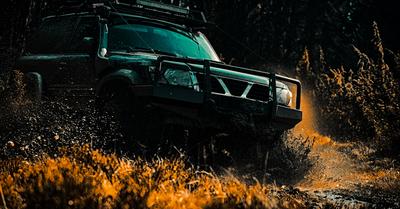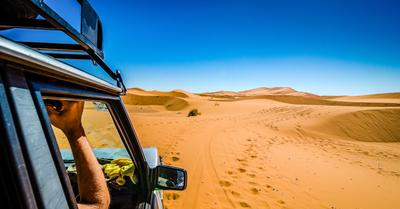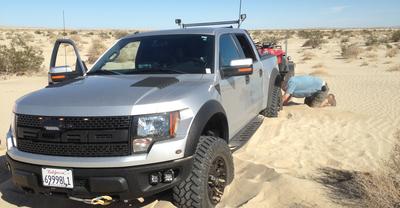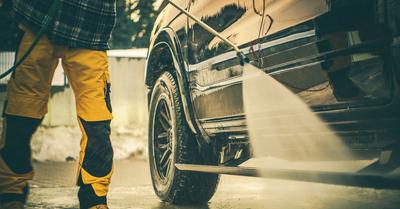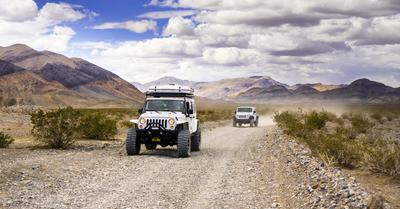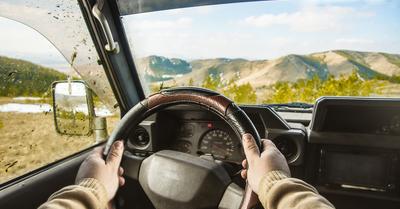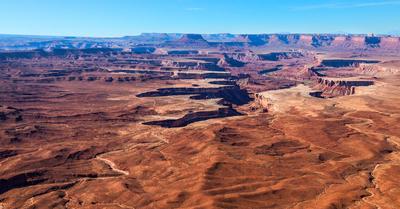Starting an off-road park isn’t the easiest business idea in the world, but it’s certainly possible with the right strategy and resources.
To start an off-road park, you’ll need a detailed plan and a suitable piece of land. The location should be close to town but out of zoning restriction areas. You’ll need to design engaging but safe trails and spread the word throughout the local off-road community.
In this article, we’ll go over the main steps required to start an off-road park. We’ll show you how to choose a plot of land, how to design the best trails, and how to spread the word about your new off-roading location. Additionally, we’ll go over some strategies for designing a park that’s safe, easy to maintain, and sustainable.
We created this article and these tips from analyzing the best private off-road parks and how they got started.
This article may contain affiliate links where we earn a commission from qualifying purchases.
How to Choose Land for an Off-Road Park
Finding some land for an off-road park is a little more difficult than finding a building lot. It’ll need to be accessible, affordable, and in a location where building an off-road park is allowed. Here are a few considerations for choosing land.
Building Codes, Permits, and Zoning
The best place to build an off-road park is in an area with limited red tape. States with too much oversight can make it financially impossible to construct a simple off-road park, as can areas too close to cities.
A good workaround is to find a location in an unincorporated rural county. These areas often have very little zoning or none at all, which allows you to do almost anything with your land.
The vast majority of the physical landmass in America is like this. You can call county offices to find out what the permitting and zoning requirements are before purchasing land.
Land Access
Land access is also a very important fact to consider. Since you’re running an off-road park, you’ll need to make sure drivers can actually get to the property.
Some plots of land are not accessible without traversing someone else’s private road, and a long train of off-road vehicles likely won’t be welcome. Be sure to find a property with direct access from a public road or highway—preferably one that’s paved.
Location
A good off-road trail shouldn’t be too far from where people live. Try to get as close to a town as possible, so people can visit in their afternoons instead of making a whole day trip. This may increase costs, but it’s worth it if you want a greater number of visitors.
Land Terrain
Wooded lots are the most fun for off-roading, as are areas with dramatic terrain. Try to find a location where the cool spots are accessible (IE no random rock cliffs in the road) but also not too easy.
If it’s a wooded lot, you might have to clear trees to make room for the trail. This increases cost and time significantly, as clearing trees is a difficult task that usually requires heavy machinery. Just keep that in consideration when choosing a plot of land.
Designing an Off-Road Park
Designing the park is the fun part of the process and also one of the most important. You’ll want to design the trails to be as consistent as possible—IE, a difficult trail is difficult, and an easy trail doesn’t have any serious challenges.
If you’re on a smaller piece of land, you’ll have to make sure that the trail eventually loops back. All trials should reach an exit at some point—you don’t want two-way traffic on a narrow off-road trail. Here are a few more points to consider when drawing up your park plan:
- Make it visually engaging
- Avoid extreme obstacles
- Keep distance from cliffs and other hazards
- Examine the land during the wet season (to find mud holes)
- Make maintenance plans
- Ensure trails have an exit
- Make trail access easy
- Include a parking area for trailers
- Designate trails by difficulty
Designate trails by vehicle type (trucks, ATVs, dirt bikes, etc.)
Make sure a fire truck or ambulance can access the parking area
The primary consideration for designing your trial should be traffic flow. As we said, you don’t want two vehicles meeting each other nose-to-nose in the middle of the trail. One-way trails that return are the best option, especially for high-traffic parks.
You should have multiple trails with multiple difficulty levels, and they should be well-labeled, so people know what they’re getting into. These trails can intersect if people want a more challenging road, but there should always be another route that beginners and unmodified vehicles can take to get out.
Off-Road Park Safety
Safety is an important factor to consider when designing an off-road park. If possible, ensure that there’s enough dedicated room in the parking area for emergency vehicles like fire trucks and ambulances. Also, install an emergency phone somewhere near the main area.
You can do a lot to prevent accidents, such as clearly marking trail directions and vehicle rules. For example, include periodic signage indicating which direction the trail travels and the difficulty of intersecting trails. Don’t forget to point to the quickest way off the trail as well.
Test each trail yourself before opening it to the public. Avoid designing trails that come too close to natural hazards, such as deep rivers or cliffs. If there is a water crossing, check the water after storms to make sure it hasn’t gotten deeper than the posted depth.
Additionally, establish a first aid station near the entrance and exit of the trails in case somebody needs emergency medical attention. These things will help make your park safer, and it will also put insurance companies at ease when you go to insure your business.
Off-Road Park Maintenance
Maintenance must also be considered when designing an off-road park. Maintenance activities like inspecting the trail, filling in holes, and grating out washboards must be performed periodically due to regular wear and tear on the dirt road.
Come up with a system for removing stuck or broken vehicles from the trail. Any trail where automobiles operate should be accessible to towing equipment, and it helps to have a tractor on-site in case someone gets stuck and blocks off the trail. You can charge an extra fee for recovery services as well.
You should also consider investing in an ATV for the park. These vehicles can access almost every trail, and you can use them for quick road inspections or assessing a situation when someone reports a problem.
Advertising Your Off-Road Park
Once you’ve established your park and a way to monetize it, you’ll have to find a way to spread the word. Word-of-mouth is the best way to get more people to your park, and it has to be good and affordable to get popular organically. But that takes time, and there are a few strategies you can use in the meantime.
Social Media Ad Campaigns
Start a social media page for your trail and feature people and their vehicles. People love getting their cars featured on someone else’s page (provided you obtain permission first), and it’s a great way to spread the word.
Social media ads are very inexpensive and highly targeted. You can target people in your area who are already interested in off-roading, and they have a good conversion rate.
Flyers and Paper Ads
Posting flyers on local bulletin boards and telephone poles is another way to spread the word. Another place to post flyers is at local auto parts shops, car dealerships, and mechanic shops. It sounds archaic, but these things actually work.
Give Away Merchandise
Giving away free stickers, sweatshirts, and hats is a great way to spread the word. If someone wears free merchandise or puts a sticker on their car, they become a walking advertisement for your off-road trail. Eventually, you can sell merchandise instead once people begin recognizing your park.


